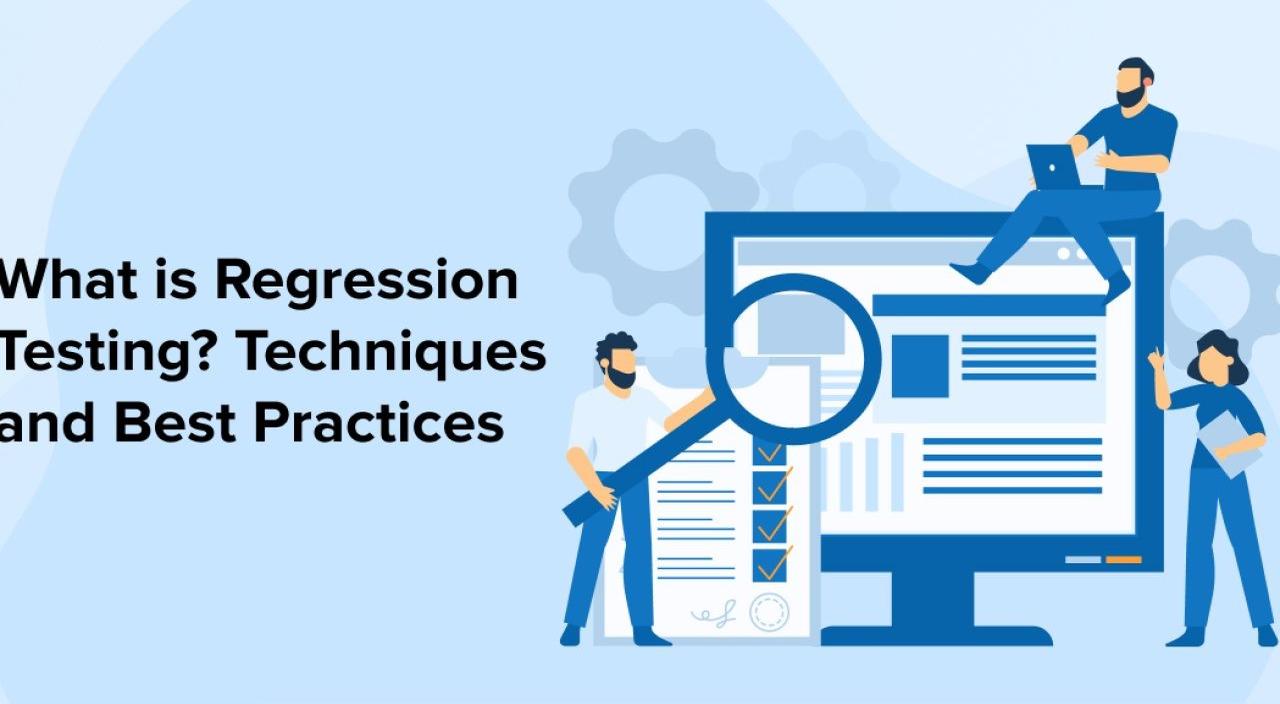Regression Testing: Techniques and Best Practices
In this era of Agile and DevOps forms of software development, software vendors roll out updates more frequently than ever to deliver seamless customer experience. To ensure that these updates haven’t impacted the existing functionality of an application, regression testing comes in. In this blog, you’ll learn about it, best practices and techniques related to this.
What is regression testing?
Regression testing is a software testing process in which an application is tested to validate whether a recent code change or new feature has not adversely impacted the existing functionalities. It is used to verify that new updates or iterations to the existing code do not break the code or hurt the existing functionality of an application.
How regression testing differs from retesting?
The main objective of regression testing is to ensure that the new modifications work as intended while the previous functionality remains intact. Contrary to this, retesting ensures that the test cases that have failed previously have been fixed. Saying otherwise, retesting validates whether the previously found bugs have been fixed.
Why can’t you ignore regression testing?
Regression tests are essential part of software testing life cycle due to following reasons:
Stability of an application
In Agile or DevOps forms of development, new features and functionalities are rolled out on a more frequent basis. Whenever the code is changed to incorporate new features, regression tests are executed to validate that the change does not interfere with the existing features of the software.
Mitigating risks
Whenever a code change occurs or new functionality is rolled out, there is a possibility that it may disrupt the existing business processes. For instance, in the case of an ERP, if an update is rolled out, there is a possibility of potential disruption. The reason for this is that ERP hardly operates as a standalone unit and integrates with other apps. Also, ERP apps are often customized to meet unique business needs.
Updates or code changes can impact customizations or integrations. Testing against regression suits can help identify potential issues that might have a devastating impact on business.
Change management
As vendors keep on adding new features and functionalities, regression test suites ensure that user experience remains optimal. This helps in managing change whenever new features are rolled out.
Regression testing techniques
- Retest All: Here, all test cases in the test suite are re-executed. It is a time-consuming and resource-intensive activity that seems impractical for large systems like ERPs.
- Selected Regression Tests: In this approach, a subset of test suite is re-executed. The focus areas of testing are those business processes which are likely to be affected by recent code changes.
- Test Case Prioritization: The test cases used here are prioritized based on their importance, frequency of use, and likelihood of failure.
Challenges in regression testing
- As we are in the era of Agile and DevOps forms of development, software vendors are rolling out new features faster than ever. For instance, Oracle rolls out quarterly updates for its Fusion Cloud applications, Salesforce rolls out updates thrice a year for its CRM, Microsoft and SAP twice a year. In such a situation, testing can be time consuming process.
- When users need to test complex applications like ERP or CRM more frequently, it can be a costly affair. When test cases are executed in the regression cycle, it will add load on the users.
Regression testing best practices
Select the right test cases
Since it is impractical to execute all the test cases, it is recommended that you should select the most critical business processes. The test case selection criteria should be based on the requirements, specifications, and impact analysis of the changes or updates.
Incorporate test automation
Incorporating test automation will not only save time, resources, and effort, but also increases the accuracy and consistency of the test results. You should bring in no-code test automation platforms like Opkey to automate test cases.
Manage test data
Test data plays a critical role in accurate testing of an application. The data you should be using needs to be realistic, reliable, and relevant to the test scenarios and objectives.
Test reports and results
Test results should be promptly recorded, documented, and shared in a clear manner with the appropriate stakeholders, including developers, testers, managers, and clients.
Read more on Techweekly






